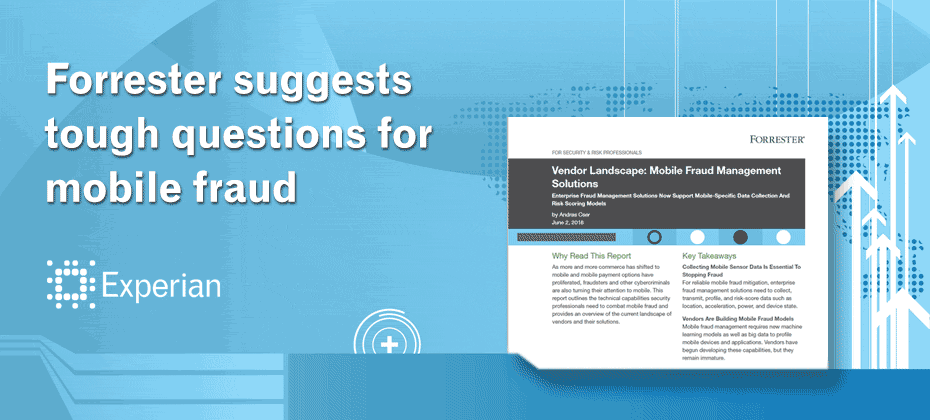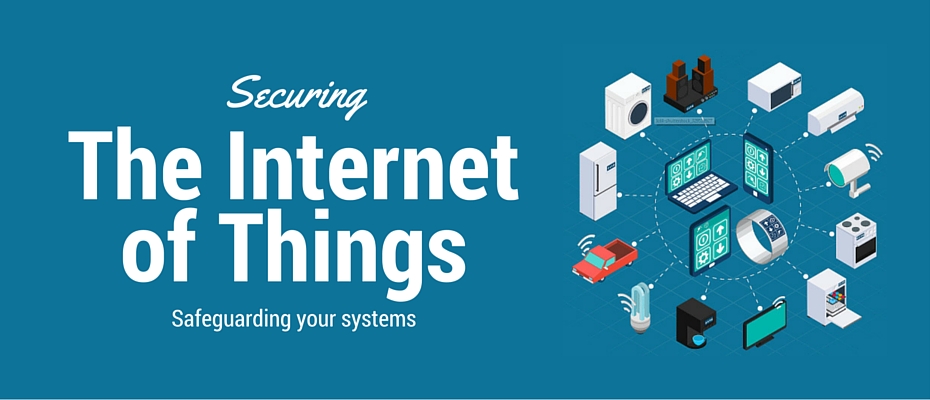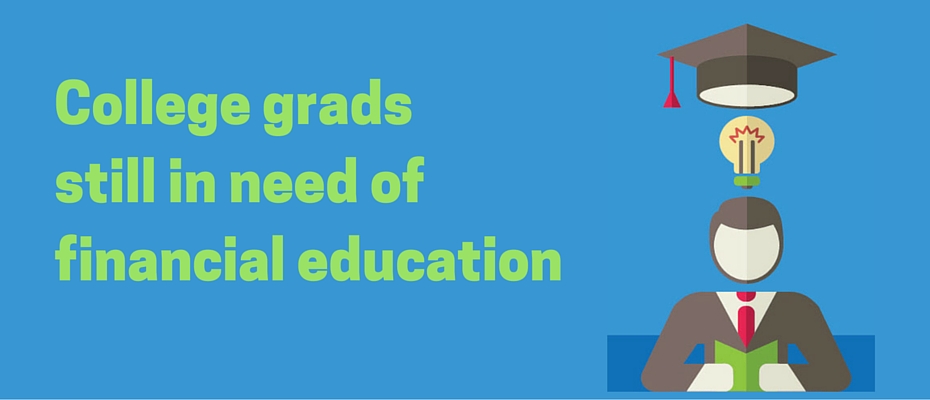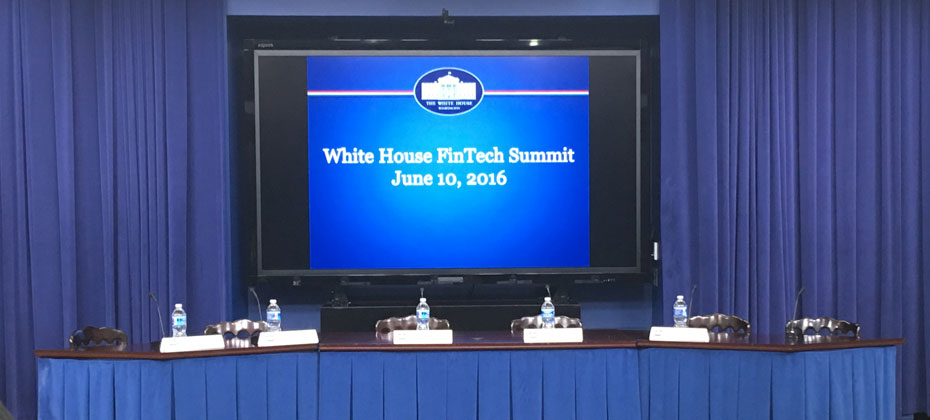Topics

We are excited to announce that Experian Fraud and Identity Solutions is presenting at FinovateFall 2016! Finovate conferences showcase cutting-edge banking and financial technology in a unique demo-only format. Held twice a year, the conferences bring together the leaders from top financial institutions, fintech companies, investors from around the globe, and fintech media to share and promote the most innovative financial technology solutions. "Experian’s Fraud and Identity Solutions is a leader in customer-centric identity and fraud solutions, providing fraud management solutions to some of the world’s largest brands in financial services, insurance, and retail," said Adam Fingersh, general manager and senior vice president of Fraud and Identity Solutions in North America. "We will introduce our Fraud and Identity Solutions and promote our newly released CrossCore platform. CrossCore puts more control in the hands of fraud teams to adapt and deploy strategies that keep up with the pace of fraud while reducing burdens on IT and data science teams." Fingersh and John Sarreal, senior director of Fraud and Identity product management at Experian, are presenting the 7-minute demo focusing on the key CrossCore capabilities, and how CrossCore manages fraud and identity services through its flexible API; open, plug-and-play platform; and powerful workflow and strategy design capabilities. In Forrester’s 2016 “Vendor Landscape: Mobile Fraud Management”, Experian Fraud and Identity Solutions was cited as having the most capabilities and one of the highest estimated revenues in total fraud management in the market, between $200 million and $250 million. Join us for the event on September 8-9 in New York. Experian also has an exclusive 20% off discount code (Experian20FF16) to get even more savings! For more information on the event or to view videos of previous demos, please visit finovate.com.

The pendulum has swung again. The great recession brought a glacial freeze to access to capital. The thaw brought rapid, frictionless underwriting with an almost obsessive focus on growth and customer experience. Enter Marketplace Lenders and their more “flexible” approach to credit risk assessment. While much good has come from this evolution in financing, new challenges have surfaced – especially as it pertains to fraud prevention and credit risk management. Stacking has emerged as a particularly knotty problem in the small business lending space. Applicants have the opportunity to apply for and be approved for multiple loans in a matter of days or even hours. Technology allows for underwriting that is at least somewhat automated and depositing often occurs within hours of approval. The speed of fulfillment is a boon for small businesses. However, it also makes it possible to be approved and draw down funds on multiple loans in quick succession. Core underwriting metrics, such as debt-to-income ratios and cashflow, are unreliable in the face of ratcheting debt from concurrent online business loans. This situation occurs because the window between the approval of the loan and delivery of the funds is much shorter than the timeframe to report the loan to credit reporting agencies and other third-party data suppliers. Not all lenders report small business loans, further compounding the problem. Lenders’ risk and pricing strategies are hamstrung in the face of stacking, whether intentional on the part of the small business or not. If a struggling small business applies for credit and receives multiple loan offers, should we rely on their ability to resist the temptation to accept them all and use the funds wisely? No. The burden rests squarely on the credit provider to proactively address the problem. Technology-enabled frictionless underwriting underpins the online consumer loan space and facilitates a similar, yet subtly different stacking problem. There are a large number of loan providers, with a spectrum of risk appetites and pricing strategies. This all but ensures that a consumer has access to additional loans at an ever-increasing interest rate. The underlying assumption, among the more mainstream, lower-rate providers, is that the consumer is disclosing all of their obligations – including any recent loans. Although reporting in the consumer space is more robust and timely, it is still possible for an applicant to quickly access and draw funds on several loans within a very short timeframe, making it difficult for loan providers to get a full and complete picture of their capacity to repay the loan. The situation is further complicated by lenders at the higher risk, higher rate end of the market whose business models are structured to allow for, and perhaps even encourage, stacking by the consumer. Fortunately, there are a number of steps lenders can take to improve the situation: Contribute credit data to the credit reporting agencies. Know your customer, their industry, their market and underwrite appropriately. Develop a tailored underwriting approach that achieves a balance between frictionless customer experience and prudent credit and risk assessment. All applicants are not equal, and some require additional scrutiny and more time to underwrite. Understand the drivers and indicators of stacking. The latter point is worth emphasizing. The time to address stacking is prior to funding. This requires the lender to anticipate, identify and pre-empt stackers. There is no 100 percent foolproof remedy. However, lenders can stack (pun-intended) the odds in their favor. For example, if an existing loan has a high balance and is delinquent, might that be an indicator of a propensity to stack? What if the business owner has applied for multiple loans, resulting in multiple inquiries, over a 45-day period? A proactive, data-driven anti-stacking strategy can yield positive results, reducing delinquency and losses. In combination with consistent comprehensive reporting to the bureaus, it can go a long way toward reducing the risk posed by this largely invisible threat.

As credit behavior and economic conditions continue to evolve, using a model that is validated regularly can give lenders greater confidence in the model’s performance. VantageScore® Solutions, LLC validates all its models annually to promote transparency and support financial institutions with model governance. The results of the most recent validation demonstrate the consistent ability of VantageScore® to accurately score more than 30 million to 35 million consumers considered unscoreable by other models — including 9.5 million Hispanic and African-American consumers. The findings reinforce the importance of using advanced credit scoring models to make more accurate decisions while providing consumers with access to fair and equitable credit. >> VantageScore® Annual Validation Results 2016 VantageScore® is a registered trademark of VantageScore Solutions, LLC

Congress recently took several actions signaling a growing interest in regulatory issues surrounding the Fintech sector. This growing attention follows a number of recent inquiries by federal and state regulators into the business practices in the industry. Subcommittee takes a deep dive into Fintech and OML regulatory landscape In July, the House Subcommittee on Financial Institutions and Consumer Credit held a hearing entitled Examining the Opportunities and Challenges with Financial Technology (“Fintech”). Witnesses and lawmakers voiced optimism that online marketplace lending can help to expand access to capital for consumers and small businesses, but the hearing also focused on a growing schism as to whether new regulations or changes to the underlying framework is necessary to ensure consumers are protected. Some lawmakers and the witness from the American Banking Association expressed concerns that the Fintech and marketplace lenders may benefit from being outside of the supervisory scope of prudential regulators and the Consumer Financial Protection Bureau (CFPB). Witnesses from the marketplace lending industry argued that they are obligated to meet all of the same regulatory compliance requirements as traditional lenders. Rep. McHenry introduces package of Fintech bills aimed at spurring innovation In addition, Congressman Patrick McHenry (R-NC), a member of the House Republican Leadership team and the Vice Chairman of the House Financial Services Committee, introduced two bills this month aimed at spurring innovation in the Fintech industry. H.R. 5724, the Protecting Consumers’ Access to Credit Act of 2016, would clarify that federal law preempts a loan’s interest rate as valid when made. The bill is in response to the Supreme Court’s recent decision not to hear Madden v Midland, a case in which the Second Circuit court ruled that the National Bank Act does not have a preemptive effect after the national bank has sold or otherwise assigned the loan to another party. The reading of this law has created uncertainty for Fintech companies and the banks that partner with them. H.R. 5725, the IRS Data Verification Modernization Act of 2016, requires the IRS to automate the Income Verification Express Service process by creating an Application Programming Interface (API). The legislation is aimed at speeding up and improving the automation of the loan application process. In particular, it is aimed at streamlining the process by which lenders gain access to tax transcript data. Currently, lenders may require applicants to fill out IRS form “4506-T,” which gives the lender the right to access a summarized version of their tax transcript as part of the process to confirm certain data points on their application. According to industry reports, this manual process at the IRS takes two to eight days, creating unnecessary delays for Fintech companies and banks that rely on leveraging data and technology to make faster, informed decision for consumer and small business lending Both bills have been referred to the House Financial Services Committee for review.

New industry report highlights the convergence of business growth and fraud prevention strategies Experian has published its first annual global fraud report covering the convergence of growth strategies and fraud prevention. The report, Global Business Trends: Protecting Growth Ambitions Against Rising Fraud Threats, is designed as a guide for senior executives and fraud prevention professionals, offering new insights on how the alignment of strategies for business growth and fraud prevention can help a business grow revenues while managing risks in an increasingly virtual world. The report identifies five trends that businesses should assess and take action on to mitigate fraud and improve the customer experience in today's fast-paced, consumer-centric environment: Applying right-sized fraud solutions to reduce unnecessary customer disruption: It's time to move on from a one-size-fits-all approach that creates more customer friction than necessary. Instead, companies should apply fraud solutions that reflect the value and level of confidence needed for each transaction. This means right-sizing your fraud solutions to align with true fraud rates and commercial strategy. Having a universal view of the consumer is the core of modern fraud mitigation and marketing: Achieving a universal profile of consumer behavior — beyond the traditional 360-degree view — requires access to a combination of identity data, device intelligence, online behavior, biometrics, historical transactions and more, for consumer interactions not only with you, but across other businesses and industries as well. Companies that translate this knowledge and use it to identify consumers can distinguish a fraudster from a real customer more easily, building trust along the way. Expanding your view through a blended ecosystem: In addition to using your own first-party data sources, companies need to participate in a blended ecosystem, working across businesses and even industries. Fraudsters have access to more data than ever before, including data traditionally used to verify identities, and they use that data to create an entire digital profile. Therefore, you can no longer get to the digital interaction data you need by managing the process in a siloed manner. Achieving an expansive view of the universal consumer requires multiple data sources working together. Achieving agility and scale using service-based models: Today, more and more companies are choosing subscription-based systems rather than building in-house or implementing on-premise solutions. Continuous upgrades and the access to new risk logic that come with subscription models provide more agility and faster response to emerging threats, no matter how fast your volume grows or what products, channels or geographies you pursue. Future-proofing fraud solution choices: Companies need access to a wide variety of traditional and emerging technologies and information sources to fill in knowledge gaps and blind spots where fraudsters try to hide. The ability to modify strategies quickly and catch fraud faster while improving the customer experience is a critical aspect of fraud prevention moving forward. Bringing together these key trends, the report provides business leaders with the insight they need to fight fraud using the same consumer-focused approach currently being used to attract new customers and grow revenue. "There is a persistent mindset that fraud loss is just the cost of doing business," said Steve Platt, global EVP, Fraud and Identity, Experian. "But as fraudsters evolve, those losses are climbing, and the status quo is no longer effective or acceptable. We all need to be as forward-looking in fighting fraud as we are in business operations and marketing, and a real understanding of consumers is critical for success. We're talking about the convergence of business growth and fraud prevention, and we're pleased to provide the first report in the marketplace covering this topic." Download the full report here. The report also features an interactive Fraud Prevention Benchmark tool that companies can use to explore how these trends impact their business and how the performance of their approach measures up against industry practices. The report is relevant to functions spanning the enterprise, including C-suite executives such as chief marketing officers (CMOs), chief risk officers (CROs) and chief data officers (CDOs). The report focuses on business processes where fraud infiltrates, including new account opening, account access, money movement transactions, and emerging trends combating fraud, such as advanced fraud analytics. In each area, the report details how multiple business functions can apply responses to create business growth. Steve Platt added: "We hear from our clients that they are most successful when CMOs along with CDOs and CROs all work together to understand the customer and develop fraud management solutions that create a better overall experience." Experian was recently cited in Forrester's 2016 Vendor Landscape: Mobile Fraud Management Solutions1 report and listed as having nine out of a possible 10 capabilities needed to combat mobile fraud. Experian was also identified as one of three leading players in the fraud detection and prevention space in a new study from Juniper Research.2 Experian applied best practices to create a global report on providing fraud management solutions that allow companies to maximize profitability while providing secure, hassle-free customer interactions. Learn more about Experian’s Fraud and Identity business. 1Vendor Landscape: Mobile Fraud Management Solutions, Forrester Research, Inc., June 2016. 2Online Payment Fraud: Key Vertical Strategies & Management 2016–2020, Juniper Research, June 2016.

A recent national survey by Experian revealed opportunities for businesses to build relationships with future homebuyers before they’re ready to obtain a loan. Insights include: 35% of future buyers said they don’t know what steps to take to qualify for a larger loan 75% of future buyers are not preapproved for a home loan 29% of those surveyed would purchase a more expensive home if they had better credit and could qualify for a larger loan A large portion of near-future homebuyers are millennials. Building relationships with this generation now will benefit financial institutions in the future. >> White paper: Building lasting relationships with millennials

All customers are not created equally – at least when it comes to one’s ability to pay. Incomes differ, financial circumstances vary and economic challenges surface. Lost job. Totaled car. Unplanned medical bills. Life happens. Research conducted by a recent Bankrate study revealed just 38 percent of Americans said they could cover an unexpected emergency room visit or a $500 car repair with available cash in a checking or savings account. It’s a scary situation for individuals, and also a source of stress for the lender expecting payment. So what are the natural moments for a lender to assess “ability to pay?” Moment No. 1: When prepping for a prescreen campaign and at origination. Many lenders leverage an income estimation model, designed to give an indication of the customer’s capacity to take on additional debt by providing an estimation of their annual income. Within the model, multiple attributes are used to calculate the income, including: Number of accounts Account balances Utilization Average number of months since trade opened Combined, all of these insights determine a customer’s current obligations, as well as an estimation of their current income, to see if they can realistically take on more credit. The right models and criteria on the front-end – whether used when a consumer applies for new credit or when a lender is executing a prescreen campaign to acquire new customers – minimizes the risk for default. It’s a no-brainer. Moment No. 2: When a customer is already on your books. As the Bankrate study mentioned, sudden life events can send some customers’ lives into a financial tailspin. On the other hand, financial circumstances can change for the better too. Aggressively paying down a HELOC, doubling down on a mortgage, or wiping out a bankcard balance could signal an opportunity to extend more credit, while the reverse could be the first signs of payment stress. Attaching triggers to accounts can give lenders indications on what to do with either scenario, helping to grow a portfolio and protect it. Moment No. 3: When an account goes south. While a lender hates to think any of its accounts will plummet into collections, sometimes, it’s inevitable. Even prime customers fall behind, and suddenly financial institutions are faced with looking at collections strategies. Where should they place their bets? You can’t treat all delinquent customer equally and work the accounts the same way. Collection resources can be wasted on customers who are difficult or impossible to recover, so it’s best to turn to predictive analytics and a collections scoring strategy to prioritize efforts. Again, who has the greatest ability to pay? Then place your manpower on those individuals where you can recover the most dollars. --- Assessing one’s ability to pay is a cornerstone to the financial services business. The quest is to find the sweet spot with a combination of application data, behavioral data and credit risk scoring analytics.

Many fraud and compliance teams are struggling to keep pace with new business dynamics. Here are several of the many mobile device trends affecting business today: 35% year-over-year growth in mobile commerce from 2014-2015 Value of mobile payment transactions is forecasted to reach more than $27 billion in 2016 45% of smartphone owners use a mobile device to make a purchase every month This rapid growth only reinforces the need for aggressive fraud prevention strategies and the adoption of new technologies to prepare for the latest emerging cybersecurity threats. >> Forrester's 2016 Vendor Landscape: Mobile Fraud Management Solutions Report

His car, more than 10 years old and not worth salvaging, was in the shop again. Time to invest in something new – or at least “new-ish.” He headed to a local dealership, selected a practical model and applied for financing. “We can’t give you a loan,” said the manager. “Your income is not high enough, but perhaps if you bring in a co-signer ...” Denied. Her college degree hung on the wall of her childhood bedroom. In the months since she celebrated graduation with family and friends, she landed a job, but not one providing enough income to cover rent, a car payment and her hefty student loan payments. “I didn’t realize my payments would be so high,” said the woman. “I don’t know how I’ll ever climb out from under this debt and start my life.” Stalled. His attempt at applying for a bankcard, much needed to begin the journey of establishing credit in the country, was met with failure. “We can’t find any credit history on you,” says the lender. “Try again in the future.” Invisible. These stories are all too common in America. A lack of financial education, coupled with a few poor choices, can derail an individual’s financial trajectory. More light has certainly been shone on the topic of financial education and the importance of making smart credit decisions from a young age, but there is no nationwide financial education program offered in schools, and many parents feel ill-equipped to handle the task. Consider a few of these numbers: 71 percent of college grads recently surveyed by Experian said they did not learn about credit and debt management in college, giving their schools an average grade of “C” when it comes to preparing them to manage credit and debt after college The latest "State of Credit" revealed the average debt per consumer is $29,093 39 percent of newlyweds say credit scores is a source of stress in their marriage Money management is tough, and we expect people to just figure it out. But clearly, that’s not working. So we need to think about the world of credit differently. As Experian says, we need to treat it as a skill. We need to practice and learn and adjust. As you get better at credit, it opens doors, creates opportunities, and enables people to live the lives they wish to live. Suddenly, you can get the car loan, move out, have access to credit cards, and manage it all responsibly. In other words, you claim financial health. On the other hand, if you don’t work at this skill, a lack of financial health ensues. Unruly amounts of debt, irregular income and sporadic savings create stress, resentment and pain. Increasingly, more financial institutions are boosting efforts to educate about credit. Schools are exploring curriculum to talk finances and inject real-life money management scenarios into everyday lessons. Millennials are seeking transparency around credit transactions. The more financially healthy consumers we have in this country, building credit skills, means overall economies will grow. So yes, financial health matters. It matters to individuals, to lending institutions, to retailers and to communities big and small. Building those credit skills is essential. Your health depends on it.

Is the speed of fraud threatening your business? Like many other fraud and compliance teams, your teams may be struggling to keep up with new business dynamics. The following trends are changing the way consumers do business with you: 35 percent year-over-year growth in mobile commerce More than $27 billion forecasted value of mobile payment transactions in 2016 45 percent of smartphone owners using a mobile device to make a purchase every month More than 1 billion mobile phone owners will use their devices for banking purposes by the end of 2015 In an attempt to stay ahead of fraud, systems have become more complex, more expensive and even more difficult to manage, leading to more friction for your customers. How extensive is this impact? 30 percent of online customers are interrupted to catch one fraudulent attempt One in 10 new applicants may be an imposter using breached data $40 billion of legitimate customer sales are declined annually because of tight rules, processes, etc. This rapid growth only reinforces the need for aggressive fraud prevention strategies and adoption of new technologies to prepare for the latest emerging cybersecurity threats. Businesses must continue their efforts to protect all parties’ interests. Fraudsters have what they need to be flexible and quick. So why shouldn’t businesses? Introducing CrossCore™, the first smart plug-and-play platform for fraud and identity services. CrossCore uses a single access point to integrate technology from different providers to address different dangers. When all your fraud and identity solutions work together through a single application program interface, you reduce friction and false positives — meaning more growth for your business. View our recent infographic on global fraud trends

Every day, millions of new things get connected online, such as toasters, heart monitors and cars. Many of these things have weak security controls that create vulnerabilities in critical private networks. As more products get connected, the casual mindset about the security risks inherent in the Internet of Things must begin to change. Here are 12 tips to help safeguard your systems from the Internet of Things. >> Securing the Internet of Things

What you give, you get. At least that is what popular philosophers claim. And if you think about it, this statement is also applicable to the world of data accuracy. As organizations of all sizes increasingly rely on data to interact with customers and create insights to drive strategy, it’s no secret bad data can quickly lead a company or financial institution down the wrong path, even landing them into regulatory troubles. A recent Experian Data Quality study found: Seventy-five percent of organizations believe inaccurate data is undermining their ability to provide an excellent customer experience. Sixty-five percent of organizations wait until there are specific issues with their data before they address and fix them. Fifty-six percent of organizations believe mistakes can be attributed to human error. For years, organizations have wanted good data simply for operational efficiencies and cost savings, but now a shift has taken place where businesses are using data for nearly every aspect of their organization. The majority of sales decisions are expected to be driven by customer data by 2020, with companies determined to turn data into actionable insight to find new customers, increase customer retention, better understand their needs, and increase the value of each customer. Additionally, the Fair Credit Reporting Act (FCRA) requires those contributing data to provide accurate and complete information to the credit reporting agencies. If they fail to meet accuracy obligations when reporting negative account histories to credit reporting companies, the result could be bureau action and fines. Organizations still deal with a high degree of inaccurate data because there are a number of challenges to maintaining it. Some of them are external forces, but many are internal challenges – most notably a reliance on reactive data management strategies. The biggest problem organizations face around data management today actually comes from within. Businesses get in their own way by refusing to create a culture around data and not prioritizing the proper funding and staffing for data management. Many businesses know they need to improve their data quality, but often have a hard time defining why an investment is needed in the current structure. Solutions exist to get in front of data accuracy challenges. DataArc 360 Powered by Experian Pandora, for example, is designed to check the consumer credit information provided by data furnishers prior to submission to credit bureaus. This allows data suppliers to take more of a proactive approach to ensuring the accuracy of information, that may result in fewer credit disputes and a more positive interaction between consumers and their credit. Creating a clear governance plan, and centralizing data management policies and policies can also clean up internal challenges and improve accuracy standards. The importance of data cannot be neglected, but again, the data has to be clean for it to matter. What you give is what you’ll get.

According to a national survey by Experian, college students may be receiving their degrees, but their financial management knowledge still needs some schooling. The survey reveals some troubling data about recent graduates: Average student loan debt is $22,813 31% have maxed out a credit card 39% have accepted credit card terms and conditions without reading them Learning to manage debt and finances properly is key to young adults’ future financial success. Since students aren’t receiving credit and debt management education in college, they need to educate themselves proactively. Credit education resources are available on Experian's Website. >> Experian College Graduate Survey Report

Experian cited in Mobile Fraud Management Solutions report from Forrester as having the most capabilities and one of the highest estimated revenues in total fraud management

Experian consultant offers his recap from attending a half-day event hosted at The White House called the “FinTech Summit” largely focused on how government agencies can tap into the innovation, in which new firms are offering small-business owners and consumers faster forms of loans and digital payments. Federal regulators have been studying the industry to determine how it can be regulated while still encouraging innovation.